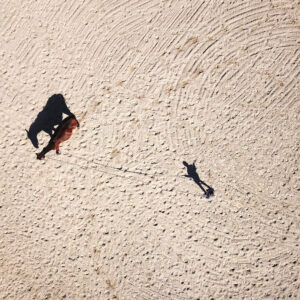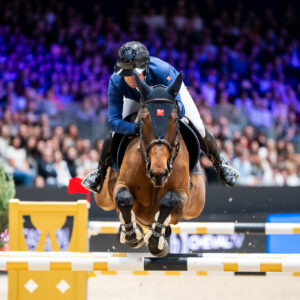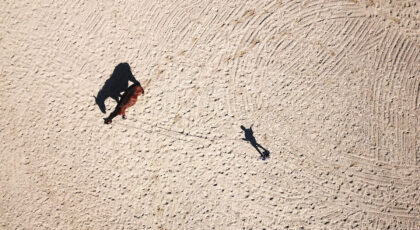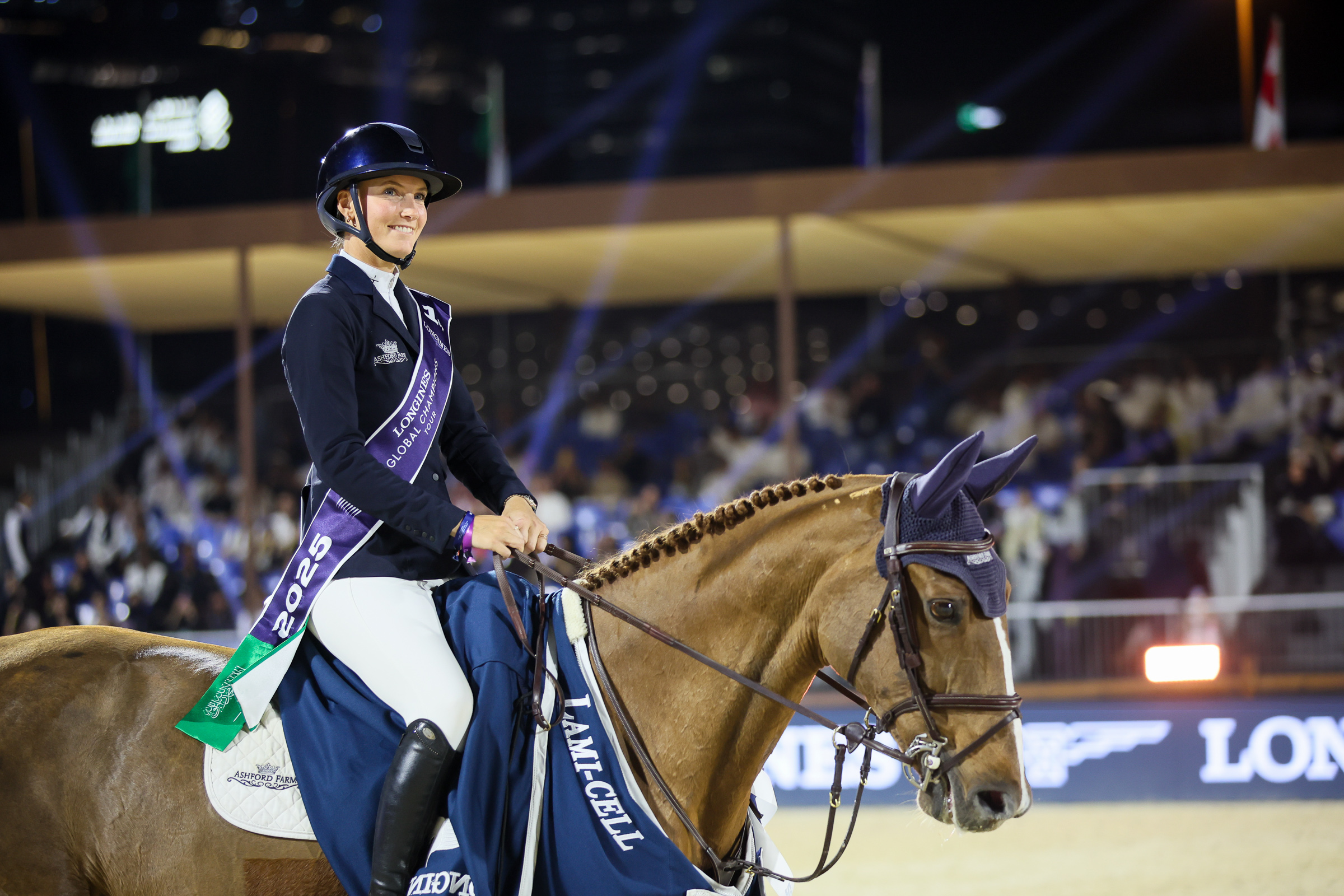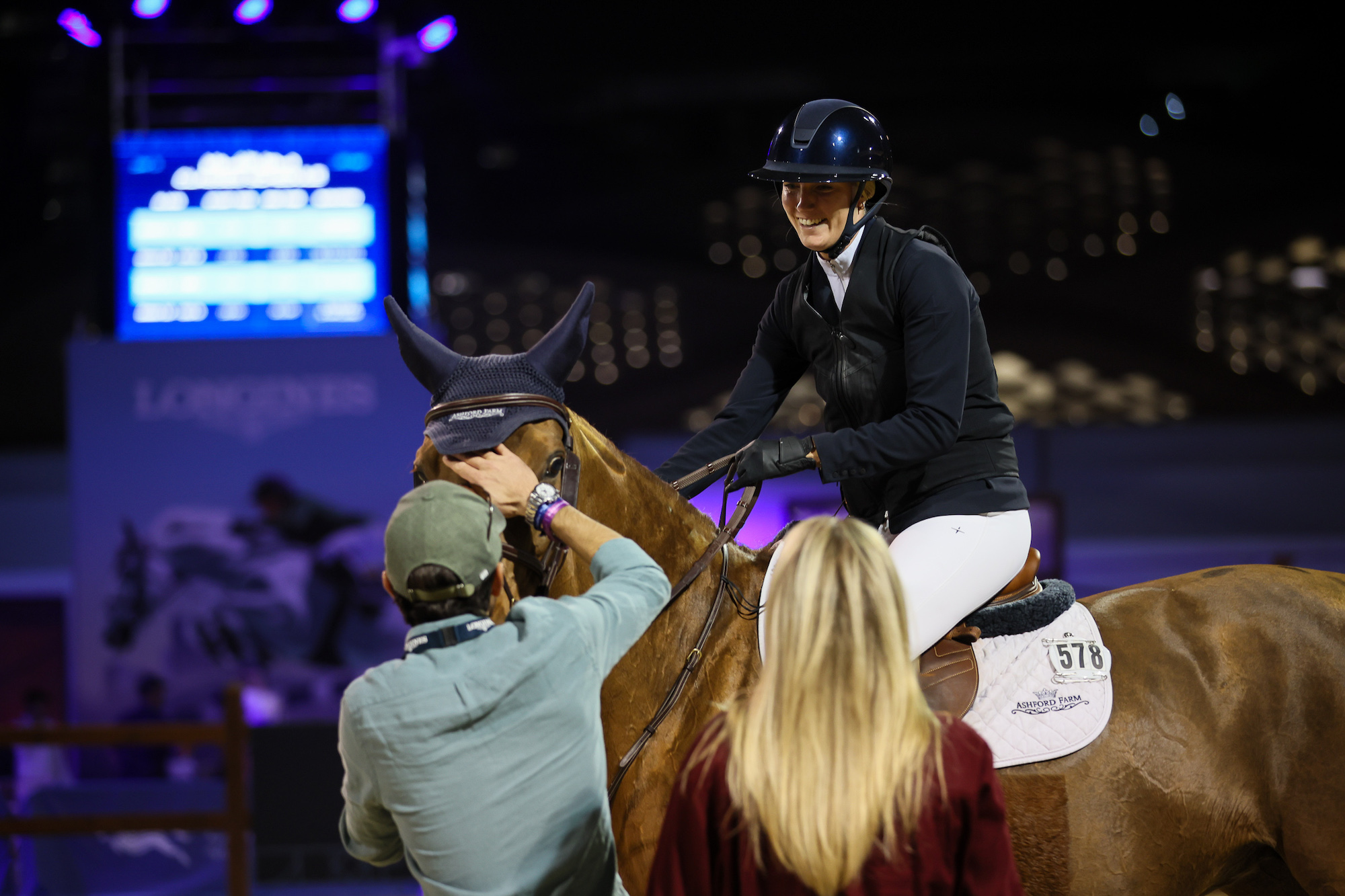Last week, I promised to explain the importance of canter balance in training young horses.
Imagine throwing 10 to 15% of your body weight up on top of your shoulders. If you weigh 150 pounds, that extra burden is gonna clock in at 15 to 23 pounds. Arrange the weight so that it all rests in one small area of your shoulders rather than being distributed evenly across your entire body. For true simulation, load it into a long tall sack that resembles the shape of a human being swaying around above you. Fasten tightly at the base. Very good.
Now, run around in circles.
The extra weight towering above your head will alter your gait and your balance.
Pick up a canter (oh, c’mon, you know what I mean; like when we were horse-crazy kids) so that your weight is tilted to your inside leg. Canter in tight circles, and the task might take you down.
This exercise should give you just enough time to verify equine canter imbalance before the police take you to the local asylum for a psychiatric work-up. If necessary, blame it on me. (Anonymously, of course.)
In effect, this is what we ask the young horse to do when learning to canter under saddle. My weight is about 11% of True’s, my three-year-old gelding, but I am especially tall. So it towers like a giant mast off the center of his back, pulling him this way and that.
If a rider could be packed into a wide low-slung backpack worn over the horse’s back and hips, she’d be a lot easier to balance. But no, the young horse has to learn to carry weight in that awkward top-heavy shape on a narrow base. Even on a trained horse, the novice rider can unbalance the team fairly easily, causing both parties to fall.
To teach balance to a young horse, we begin at the walk and trot, shifting weight into the outside stirrup around corners and holding the inside leg against the horse’s body to prevent an inward slant. In other words, instead of leaning inward with the horse, we are counter-balancing his inward slant with our outward slant.
When cantering, this shift becomes even more important because youngsters tend to fall inward on a curve. We master balance at slower gaits before attempting it at a canter. And we start with large canter circles, working up to small circles over time.
If your weight is primarily on the inside stirrup around a corner, the job of remaining upright becomes harder for the horse. But if you step a little harder on the outside stirrup while applying a bit of inside leg pressure, you teach your young horse to achieve balance.
Once he learns to carry you comfortably, there’s no need to continue over-riding every curve. It’s a temporary teaching technique, kind of like training wheels on a bicycle.
Related reading:
Brain-Based Horsemanship is a weekly column that chronicles Janet Jones, PhD, and her journey with True, a Dutch Warmblood she trained from age three using neuroscience best practices. Read more about brain-based training in Jones’ award winning book Horse Brain, Human Brain.

This story originally appeared on janet-jones.com. It is reprinted here with permission.


 April 19, 2023
April 19, 2023 







